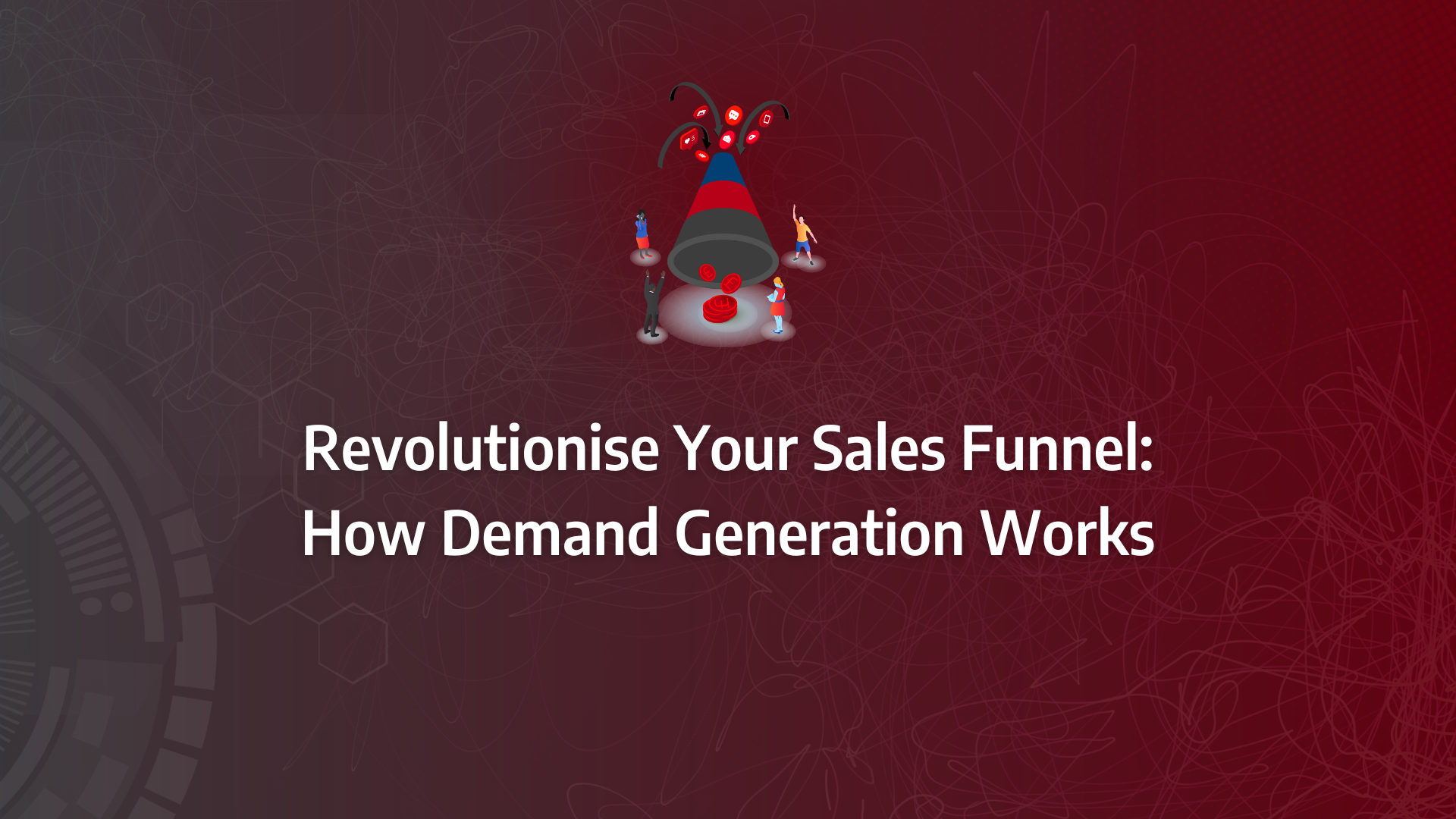The ability to consistently generate demand is the lifeblood of a successful sales funnel. But with evolving buyer behaviours and an ever-expanding digital ecosystem, how can you ensure your demand generation efforts are hitting the mark? The key lies in understanding the full spectrum of demand generation strategies—those that not only attract attention but also guide potential customers smoothly through your sales funnel, from initial interest to final conversion.
By leveraging data-driven insights and aligning your marketing and sales teams, you can transform your approach to demand generation. In this guide, we’ll explore proven tactics and emerging trends that will empower you to refine your strategy, optimise your sales funnel, and achieve sustainable growth.
- Strategic Integration: Ensure alignment between marketing and sales teams to create a seamless demand generation process that nurtures leads effectively through each stage of the sales funnel.
- Content-Driven Engagement: Use content marketing as a core element of your demand generation strategy, providing valuable, relevant content to engage potential customers at every touchpoint.
- Personalisation and Automation: Leverage CRM tools and marketing automation to deliver personalised experiences that resonate with your target audience, enhancing engagement and conversion rates.
- Data-Driven Decisions: Monitor key metrics such as lead quality, conversion rates, and ROI to continuously refine your demand generation strategies and ensure they deliver measurable results.
- Overcoming Challenges: Address common obstacles in demand generation, such as content saturation and lead quality, by adopting innovative solutions like AI and machine learning to optimise your efforts.
- Future-Proofing Your Strategy: Stay ahead of industry trends by integrating emerging technologies into your demand generation strategy, ensuring your sales funnel remains effective in a rapidly changing market.
What is Demand Generation?
Demand generation refers to the systematic approach of cultivating awareness and creating interest in your product or service. The core objective of demand gen marketing is to strategically expand your audience, position your brand as a thought leader, and ultimately generate interest that leads to high-quality prospects.
The demand generation process encompasses a broad spectrum of activities, starting long before a potential prospect is identified, and continuing well after they convert into a customer. Effective demand gen marketing requires seamless collaboration and transparency between your sales and marketing teams, ensuring both departments can spot gaps and bottlenecks in the funnel, allowing for continuous optimisation. This alignment is key to successful outcomes.
What Matters Most?
Creating educational content is vital for establishing your brand as a trusted resource, which fosters deeper relationships with your audience. Building a strong community around your brand not only enhances loyalty but also drives demand when messaging is clear and resonates. Equally important is the alignment between marketing and sales teams; when these teams work cohesively, they create a unified approach to lead generation and nurturing that significantly enhances effectiveness and conversion rates.Get In Touch
What Are the Best Demand Generation Strategies?
To drive effective demand, a strong demand generation strategy must focus on producing compelling, high-quality, and authoritative content that resonates with your ideal customers. Below, we explore some of the most impactful demand generation tactics you should integrate into your B2B marketing efforts.
Content Marketing
According to the 2023 B2B Buyers Survey, 81% of buyers indicated that content significantly influences their purchasing decisions. Therefore, content marketing is a critical tactic within the demand generation process.
Content formats to consider for driving demand include:
- Blogs: Educational articles that help your audience solve problems while improving your website’s visibility on Google.
- Videos: Engaging YouTube content that highlights your product features or dives into industry-relevant topics.
- eBooks: In-depth guides or whitepapers, either gated or ungated, that position your brand as a trusted authority.
- Podcasts/Webinars: Expert-led discussions around key industry themes or product offerings, often featuring guest speakers.
- Industry Insights: Collaborating with industry influencers to co-create content that they can share with their own networks.
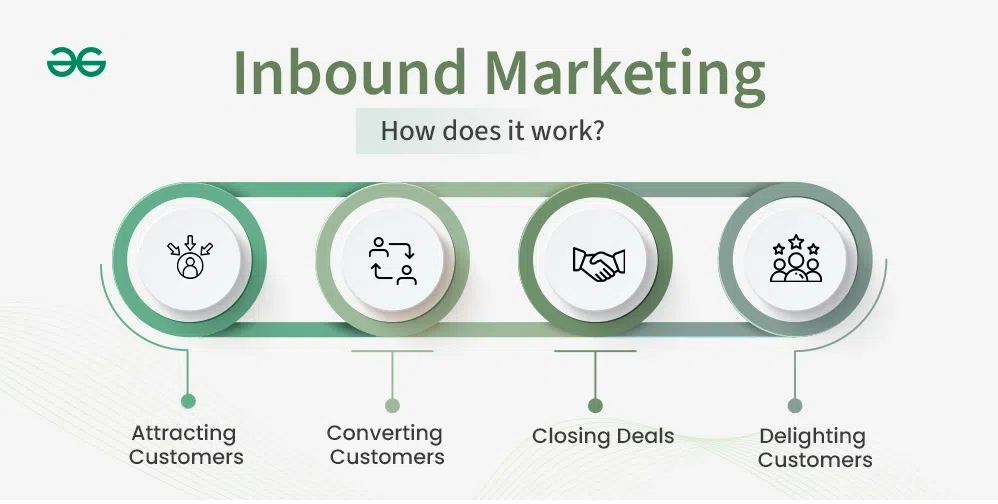
It’s vital to ensure that all content you create directly answers the specific questions your target audience is asking, ensuring its relevance and increasing the likelihood of engagement.
Account-Based Marketing (ABM)
Account-based marketing (ABM) is a highly focused approach to demand generation, where your marketing efforts are tailored to individual accounts or companies. Why does this work so well in B2B demand gen? The ITSMA Survey reported that businesses implementing ABM saw an 84% improvement in reputation and a 74% enhancement in customer relationships.
ABM allows you to direct your demand generation tactics toward key decision-makers within specific organisations, offering personalised solutions that move prospects further along the sales funnel. Here are a few best practices for maximising your ABM campaigns:
- Build a highly targeted email list using demand generation strategies.
- Segment your audience into precise groups for more focused messaging.
- Use automation software to craft and deliver email sequences that nurture leads over time.
- Continuously track campaign performance, optimising for better results.
ABM campaigns can be executed through multiple channels, including email marketing, LinkedIn ads, and direct email—all highly cost-effective means of getting in front of your ideal customers.
Paid Advertising
Leveraging paid advertising is one of the quickest ways to drive demand and increase visibility among your target audience. Pay-per-click (PPC) ads can place your brand at the top of Google’s search results when users search for specific terms. Similarly, social media ads can help you appear in the feeds of your ideal customers, increasing brand awareness and engagement.
Platforms like Google and Facebook offer detailed analytics that allow you to track performance metrics, such as click-through rates (CTR) and conversion rates, helping you identify what’s working and what needs improvement. Using paid advertising as part of your demand generation strategies can rapidly accelerate awareness and fill the top of your sales funnel with high-potential leads.
Is lead generation the same as demand generation?
Demand generation is the process of building awareness and interest in your company’s products or services. This approach is not just about selling but about educating and nurturing your audience, ensuring that your brand is front of mind when the need for your solution arises. It also enables businesses to tap into new markets and reach fresh audiences.
On the other hand, lead generation takes the interest created through demand generation and transforms it into actionable leads—prospects who are ready to take the next step and become customers.
Unlike lead gen, demand gen is far less transactional. Here’s why:
Demand generation and lead generation occupy distinct stages in the B2B sales funnel. Demand generation tactics focus on creating awareness at the very top of the funnel, bringing prospects into your ecosystem, whether that’s through your website, social media profiles, or other digital channels.
Lead generation comes into play further down the funnel. After engaging with your brand, prospects will indicate their interest by providing their personal information to learn more. For example, they may sign up for a demo or download gated content from a landing page.
Essentially, demand generation sits above lead generation in the sales funnel. If you’re not generating enough leads, the issue may lie in the demand generation process. Without awareness of your brand and its potential to solve specific problems, it’s difficult to convert prospects into leads.
Key Differences Summarised
Goals: The primary goal of demand generation is to build awareness of your company and its ability to solve specific problems. Even if your prospects don’t have an immediate need, it’s crucial they understand who can provide the solution when the need arises.
Lead generation, on the other hand, focuses on turning that awareness into qualified leads. As prospects progress through the buying journey, the focus shifts to how your product can address their specific pain points, encouraging them to take action and engage with your brand on a deeper level.
Engagement: Demand generation builds trust and establishes your authority within the market. By positioning your company as an industry thought leader, you increase the likelihood that your audience will engage with your brand when they are ready.
Lead generation focuses on converting that trust into direct engagement. By showcasing the benefits of your product or service, lead gen helps differentiate your offering from competitors, making your solution the obvious choice.
Impact: Demand generation is about educating your audience. It involves the creation of free, ungated content that addresses your prospects’ key challenges and questions, building rapport and credibility over time.
Lead generation takes this a step further by nurturing leads and positioning your brand through gated resources. These require contact information, allowing you to convert interest into actionable leads.
What is the Difference Between SDR and Demand Generation?
While both Sales Development Representatives (SDRs) and demand generation efforts aim to move potential customers through the funnel, their roles differ significantly.
SDRs are tasked with actively reaching out to potential customers, making them aware of a company’s products or services. Their role is highly focused on converting cold leads into warm prospects through personalised outreach, be it via email, phone calls, or social media.
Demand generation, in contrast, encompasses a wider range of activities designed to build interest in a brand across the entire market. While SDRs initiate direct contact, demand gen works in the background, creating a foundation of awareness and authority that makes potential customers more receptive to outreach.
SDRs: Lead Qualification and Outreach
SDRs utilise platforms like LinkedIn and HubSpot to identify and manage potential leads. Their role is to engage with these individuals and assess whether they are a good fit for the product or service. This process, known as lead qualification, involves asking probing questions to determine the prospect’s needs and challenges.
If the prospect demonstrates sufficient interest, the SDR will arrange a meeting with an Account Executive (AE), who can then guide the lead further down the sales funnel towards a potential purchase. During this journey, SDRs gather valuable feedback that helps inform future marketing campaigns and sales strategies.
Key Differences Between SDRs and Demand Generation
While SDRs focus on lead handling—turning interested individuals into qualified meetings for account executives—demand generation strategies are more about creating brand awareness long before prospects are ready to make a purchase.
Demand generation leverages a variety of marketing channels to increase your company’s visibility, including content marketing and social media campaigns. These demand generation tactics build trust with potential buyers and educate them on why your product or service is the right solution for their needs, even before they are in the market to buy.
Ultimately, SDRs operate at the intersection of lead handling and personalised outreach, while demand generation aims to elevate overall brand awareness, driving future sales opportunities.
How to Build a Demand Generation Plan
1. Know Your Target Audience
The cornerstone of any effective marketing strategy is a deep understanding of your target audience or Ideal Customer Profile (ICP). Demand gen marketing is no different. Defining who you’re targeting allows you to develop a more focused demand generation strategy, ensuring your messaging resonates, your targeting is precise, and your tools are well chosen. This clarity enhances your chances of conversion, improves engagement rates, boosts customer retention, and drives the cost-effectiveness of your campaigns.
Here are some of the most effective demand generation tactics for defining your audience:
- Market Research: A foundational step in any demand generation process, market research allows you to gather detailed insights about your target audience, including their preferences, needs, and behaviours. Tools like surveys, focus groups, and online research provide invaluable data that helps you craft targeted and effective demand generation strategies.
- Leverage Social Media: Social platforms are rich with audience data, from demographics to interests and behaviours. By using social media monitoring tools, you can gather insights into your audience’s preferences, shaping your demand gen marketing to meet their needs more precisely.
- Data and Analytics: Most businesses today have vast amounts of data sitting in their CRM systems. Analysing this data with advanced tools allows you to spot trends and patterns, enabling you to refine your demand generation tactics and target the right prospects more efficiently.
Competitor Research
Understanding your competitors is crucial when designing your demand generation strategies. Competitor analysis allows you to observe how others in your industry are attracting and converting customers, helping you identify which approaches work and which do not.
By recognising your competitors’ strengths and weaknesses, you can build on your own advantages while addressing any potential gaps. This process also sharpens your product messaging, helps you identify key SEO opportunities, and fine-tunes your Unique Selling Propositions (USPs). Ultimately, competitor research enables you to develop a strategy that draws prospects into your sales funnel—before they land in your competitors’.
Source: StudioID
2. Building Buyer Personas
Buyer personas are research-based profiles that represent segments of your target audience. This process goes beyond general market research, allowing you to focus on specific characteristics such as behaviours, challenges, and decision-making processes.
In B2B SaaS, multiple buyer personas are common, as purchasing decisions typically require the approval of several stakeholders. Each stakeholder may have distinct concerns and motivations, even if they’re all contributing to the purchase of the same product or service. A well-developed set of buyer personas ensures that your demand generation strategies address these varied needs, ultimately improving your conversion rates.
3. Map the Customer Journey
Once you’ve gathered the necessary insights from your market research and buyer personas, the next step is to map the customer journey. This diagram (or series of diagrams) illustrates every touchpoint a customer has with your brand—from first hearing about your product to completing a purchase and entering the onboarding flow.
A well-constructed customer journey map is invaluable to your overall demand generation process. It helps you pinpoint the goals and challenges faced by your ICP at each stage, while revealing the specific channels they use to seek solutions. This insight enables you to refine your demand generation tactics and provide the right content at the right time, increasing engagement and accelerating conversions.
Go Multi-Channel
In today’s digital landscape, a multi-channel approach is essential for businesses looking to expand their reach and credibility. Engaging across multiple platforms not only increases your brand’s visibility but also enhances trust and engagement with a broader, more diverse audience.
Utilising multiple channels—whether it’s social media, email, content marketing, or paid advertising—enables your business to connect with customers in a way that resonates with them personally. This approach not only boosts engagement but also mitigates risk by ensuring your marketing efforts aren’t reliant on a single channel.
In conclusion, adopting a multi-channel approach in your demand generation marketing efforts helps your business create more touchpoints with your audience, improving engagement while reducing reliance on any one platform. The result is a well-rounded, credible marketing strategy that delivers consistent results.
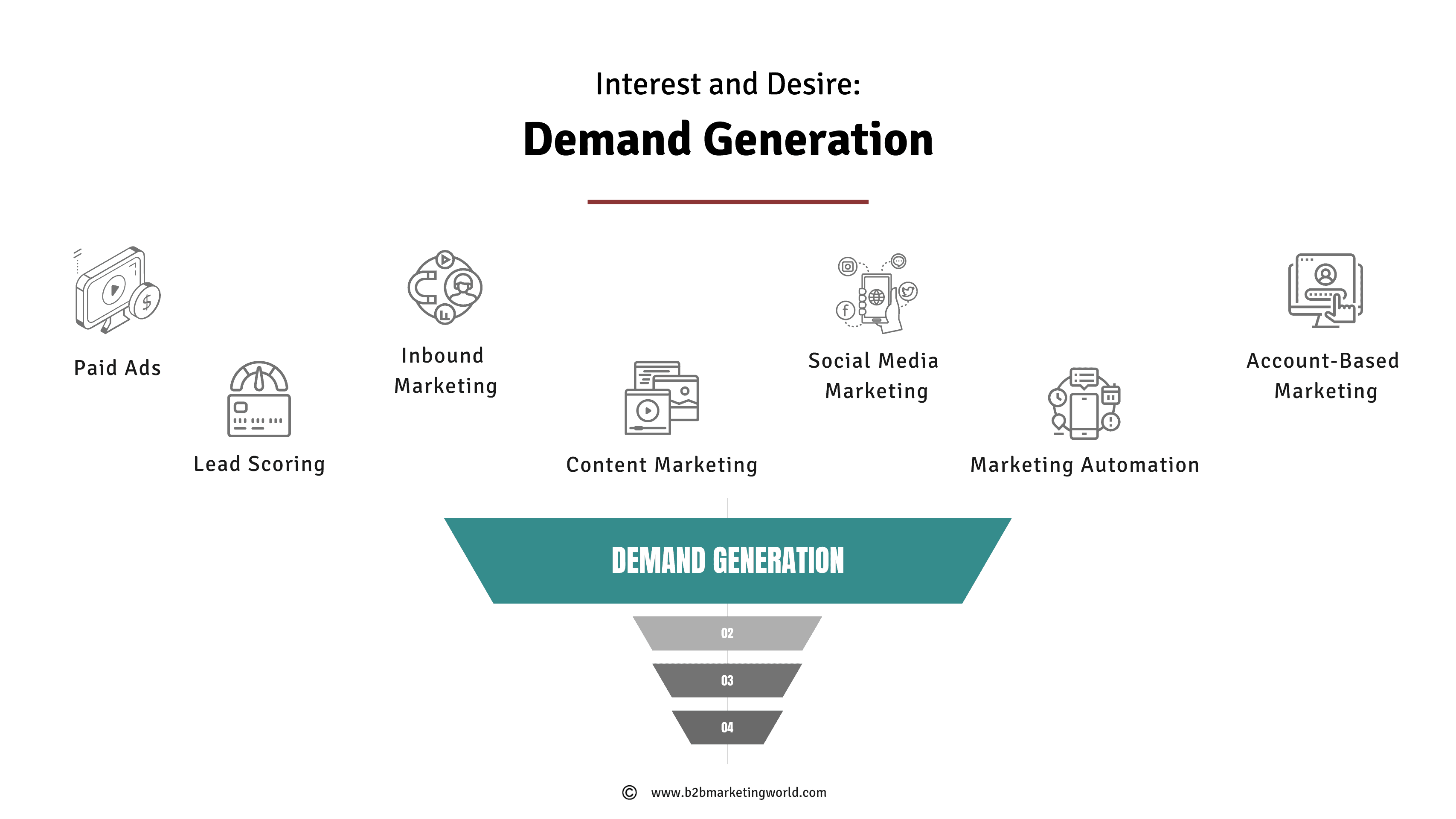
4. Create Engaging Content
Content is the beating heart of any successful demand generation strategy. Well-crafted, engaging content helps you connect with your audience, encouraging them to take action. More importantly, it positions your brand as an authority, educating potential customers about your products and services while guiding them through their buyer journey.
From highlighting the benefits and features of your offerings to addressing specific pain points, your content should be designed to help prospects make informed decisions. Blogs, eBooks, videos, and webinars are just a few of the content formats that can be leveraged as part of your demand generation tactics.
Creating valuable content that educates and inspires action is not just about showcasing your products; it’s about building trust and authority, leading to long-term relationships with your audience.
Our Tactical Recommendations
Implementing A/B testing in campaigns can greatly optimise strategies based on performance data, allowing for improved conversion rates. Our clients often discover that utilising automation tools enables the creation of scalable demand generation models, enhancing efficiency in reaching potential leads. Additionally, establishing a feedback loop between sales and marketing teams allows for real-time insights that refine targeting and improve lead quality.Get In Touch
Best Practices for Optimising Demand Generation Strategies
Lead Scoring
One of the key demand generation tactics is ensuring your marketing and sales teams focus their efforts on leads most likely to convert. A well-implemented lead scoring system can help you achieve this by prioritising leads with a higher chance of making a purchase. This not only saves time and resources but also streamlines your demand generation process.
Lead scoring works by assigning points to a prospect based on their online and offline behaviour in relation to your products or services. Once a lead reaches a predefined score, they are passed over to sales for further engagement.
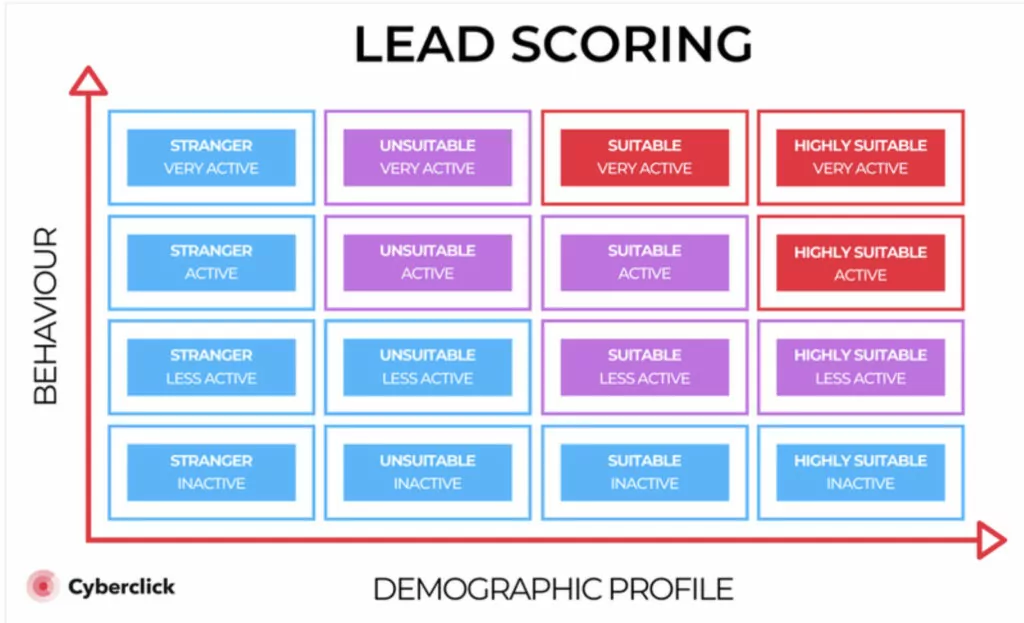
A robust lead scoring strategy should consider the following:
- Lead demographics and firmographics: Understanding the company size, location, and other relevant factors.
- Budget, authority, need, and timing (BANT): Evaluating whether the lead has the capacity and authority to make a purchasing decision.
- Lead interest and engagement: Tracking the level of interaction with your content, such as email opens or website visits.
- Lead behaviour: Analysing which products or services they’re browsing on your site.
- Social media activity: Monitoring their engagement with your brand across social channels.
By assigning accurate scores, you’ll know exactly when to connect with a lead, what information to share, and the best approach to take.
Use Both SEM and SEO
A common debate in demand gen marketing is whether search engine optimisation (SEO) or search engine marketing (SEM) is the more effective strategy for driving results. The truth is, you don’t have to choose between the two—they complement each other.
SEM, with its pay-per-click (PPC) ads, delivers immediate visibility and is particularly useful for new businesses or product launches. It allows you to target your ideal audience with precision, providing an instant traffic boost. Meanwhile, SEO is a long-term strategy that builds credibility and drives organic traffic over time, making it essential for sustained success.
By combining SEM and SEO, you can create a powerful demand generation strategy that leverages both short-term gains and long-term growth. Increased traffic from SEM can also enhance your brand’s visibility, which in turn supports stronger organic rankings through SEO.
Source: Business2Community
Demand Capture Is Just as Important as Demand Creation
While we’ve largely focused on demand creation—the process of building awareness among potential buyers—it’s crucial not to overlook the importance of demand capture. Once prospects begin searching for solutions to their problems, you must be strategically positioned to convert that interest into action.
This means optimising your website for conversion. Best practices for both demand generation and lead generation emphasise the importance of directing traffic from paid ads and organic searches to highly targeted landing pages designed to convert visitors into leads.
While running PPC ads and optimising for SEO will help you attract traffic, your website is often the first point of contact with potential customers. Therefore, it’s critical that your site is visually appealing, easy to navigate, and designed with clear calls to action (CTAs) that capture leads effectively.
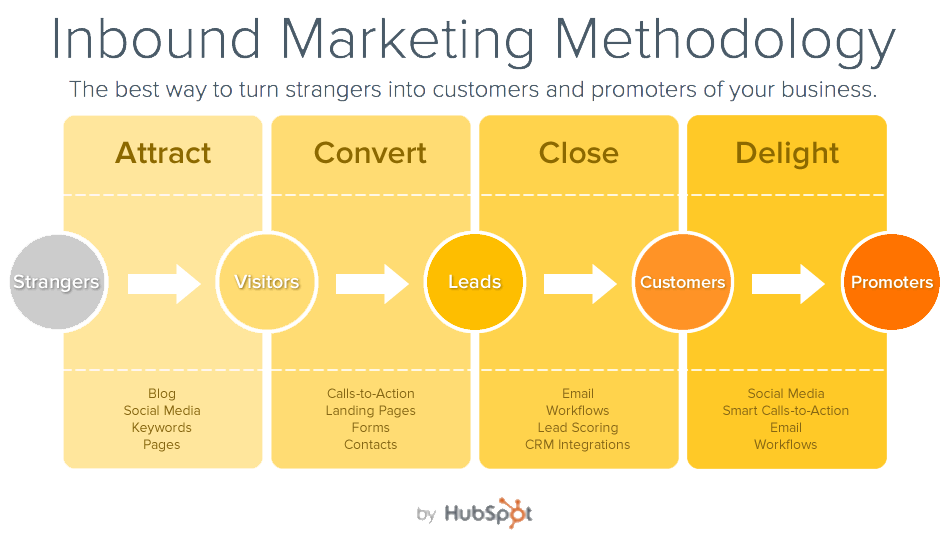
Build Authority Through Event Marketing
Event marketing is another highly effective demand generation tactic that can significantly boost your brand’s authority and credibility. According to Forbes, 70% of marketers believe live events are crucial to their company’s marketing success. Events provide an opportunity for direct engagement with your audience, allowing you to offer personalised solutions to their challenges in real-time.
You don’t have to focus solely on large-scale events. Smaller, more intimate gatherings can offer unique opportunities to stand out and connect more deeply with potential customers. Additionally, hosting your own events can provide further value by positioning your brand as an industry leader.
Through event marketing, your company can build trust and foster long-term relationships, which ultimately translate into greater brand loyalty.
Use Intent Data to Reach In-Market Clients
Another powerful demand generation strategy is leveraging intent data. This data, which tracks potential buyers’ online activities, can help you identify and engage with in-market clients more effectively. By understanding what your prospects are searching for and where they are in their buyer journey, you can tailor your marketing efforts to meet their needs more precisely.
Intent data allows for varying degrees of accuracy, enabling you to refine your approach based on search intent. By knowing exactly what prospects are looking for, you can position your product or service as the perfect solution, creating demand in a more targeted and impactful way.
With 99% of large companies using intent data, and 98% of marketers expressing confidence in its effectiveness, it’s clear that intent-driven marketing is a crucial element of any modern demand gen marketing strategy. Additionally, nearly 70% of businesses are planning to increase their investment in intent data, further highlighting its growing importance.
